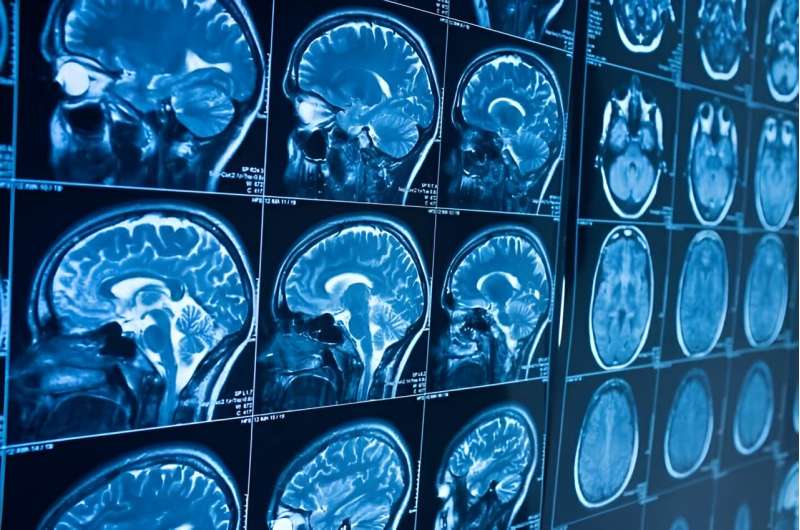This article has been reviewed according to Science X's editorial process and policies. Editors have highlighted the following attributes while ensuring the content's credibility:
fact-checked
trusted source
proofread
Locked-in syndrome is predominant outcome when children survive drowning, large study confirms

It is a far cry from the traditionally thought-of "vegetative state" in which the mind is absent while the body lives on. Indeed, it is the opposite. Children with "locked-in syndrome," unable to move or speak, are awake and fully aware of their surroundings.
Researchers from The University of Texas Health Science Center at San Antonio (UT Health San Antonio) were the first to report in peer-reviewed medical literature that, after non-fatal drownings, children would be locked in. The team, directed by Peter T. Fox, MD, professor of radiology and neurology and director of UT Health San Antonio's Research Imaging Institute, described a set of features in brain imaging studies that identified the cause and explanation of locked-in syndrome.
The first 11 pediatric drowning survivors were imaged at UT Health San Antonio in the 2010s. Now, in follow-up research published in the journal Pediatric Neurology, the team reports the largest study to date on the subject. The analysis of 154 children confirms that the predominant outcome of non-fatal pediatric drowning is locked-in syndrome. The paper is titled "Long-term Neurocognitive Outcomes in Pediatric Non-Fatal Drowning: Results of a Family Caregiver Study."
In the research, 60% of children who survived drowning events (93 of 154) were classified as locked in by family caregivers surveyed by UT Health San Antonio.
"The range of disability in the children was large," Fox said. "About one-fourth were mildly impaired, very nearly normal in all functions. Half were moderately impaired motorically but with preserved cognition and perception. One-fourth were severely impaired motorically, but less spared cognitively. Of the moderate and severe groups, nearly 80% were locked-in."
Caregivers in tune with the children
Caregivers were identified and surveyed between 2018 and 2021 after Fox and colleagues published the initial brain imaging studies of pediatric non-fatal drowning in 2016 and 2017. Fox said the data obtained from the survey was clear and powerful.
"The take-home from this is that the parents and other caregivers of locked-in children really understand the cues they see and do an exceptional job sensing whether the children are responding or not responding," Fox said.
"Physicians and the health care team should find more ways to engage the parents and caregivers and trust their observations," he said. "Caregivers are a very underutilized resource. We need to be more respectful and aware of the quality of their observations."
Remembering Conrad
The first child survivor to be imaged at UT Health San Antonio was Conrad Tullis of San Antonio.
Conrad, born in 2002, survived drowning in 2004 and lived to be 20. He inspired many and attended all 12 grades of school, graduating in the Alamo Heights School District in San Antonio.
"The locked-in state of Conrad and the other children was recognized first by the parents, which is very important to note," Fox said. "This condition was brought to my attention by Liz Tullis, Conrad's mom, who noticed her son was responsive even though she was being told he could not understand her. Tullis, along with other parents from a support group for parents of children who survived a drowning, helped the team recruit for the studies.
"As parents, we know our children, and we can tell the difference between responsive and unresponsive," Tullis said. "While doctors were telling me my child would never lead a meaningful life, I knew he was capable of understanding and communicating with us, albeit he was non-verbal."
Imaging gleans answers
The parents had read news stories about the Research Imaging Institute, a highly specialized center at UT Health San Antonio that brings multiple imaging modalities (magnetic resonance imaging, functional MRI, positron emission tomography and more) to bear on research questions.
"They came to ask if imaging could tell whether the doctors were right in telling them that the children were not conscious, or whether they, the caregivers, were right," Fox said.
The Research Imaging Institute's imaging studies revealed that cognitive and sensory networks are preserved in the brains of these children. The injury does not, as formerly believed, impact the entire brain, but is confined to a small area.
The findings supported parents' conviction that their children are experiencing emotions, learning new ideas and developing personalities. The research also created hope that someday the brain injury might be treatable.
The new research did not include imaging but added experiences and observations of a much larger group of affected individuals. "I'm hoping that this new publication will make it feasible to do more investigation in this larger cohort of children, both imaging and other tests," Fox said.
Conrad Syndrome
The researchers asked Pediatric Neurology editors to dedicate the article to Conrad Tullis and endorse the eponym "Conrad Syndrome" for locked-in state. The journal agreed.
Children admitted to the hospital after non-fatal drownings had better outcomes if their hospital stay required no medical intervention such as intubation, the survey indicated. If the children were responsive, not in a coma, at admission and at discharge, their outcomes were better.
It may be possible in the future to use portable imaging systems to test patients at home for locked-in syndrome, Fox said.
More information: Muslima S. Razaqyar et al, Long-Term Neurocognitive Outcomes in Pediatric Nonfatal Drowning: Results of a Family Caregiver Survey, Pediatric Neurology (2023). DOI: 10.1016/j.pediatrneurol.2023.11.001


















